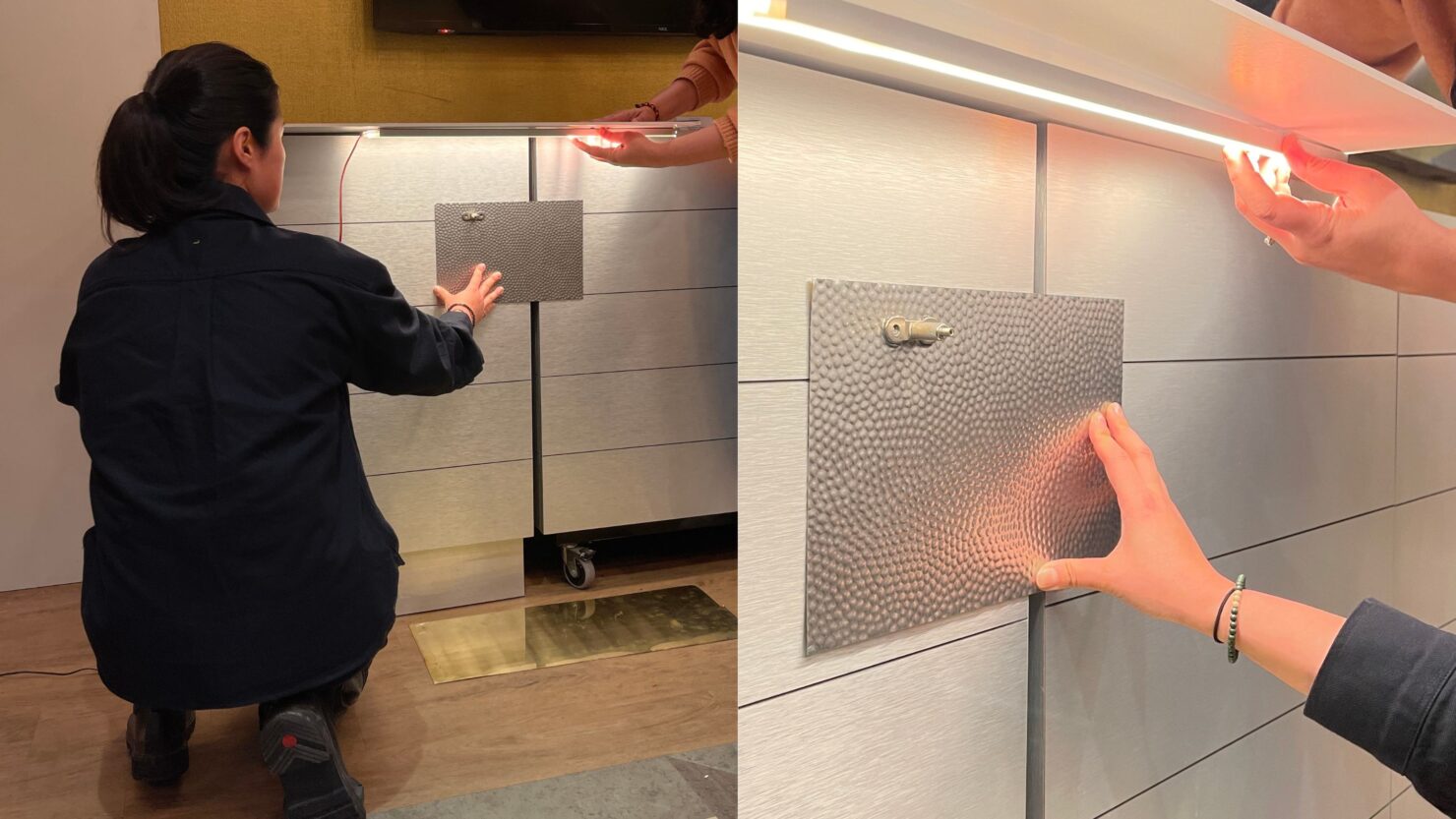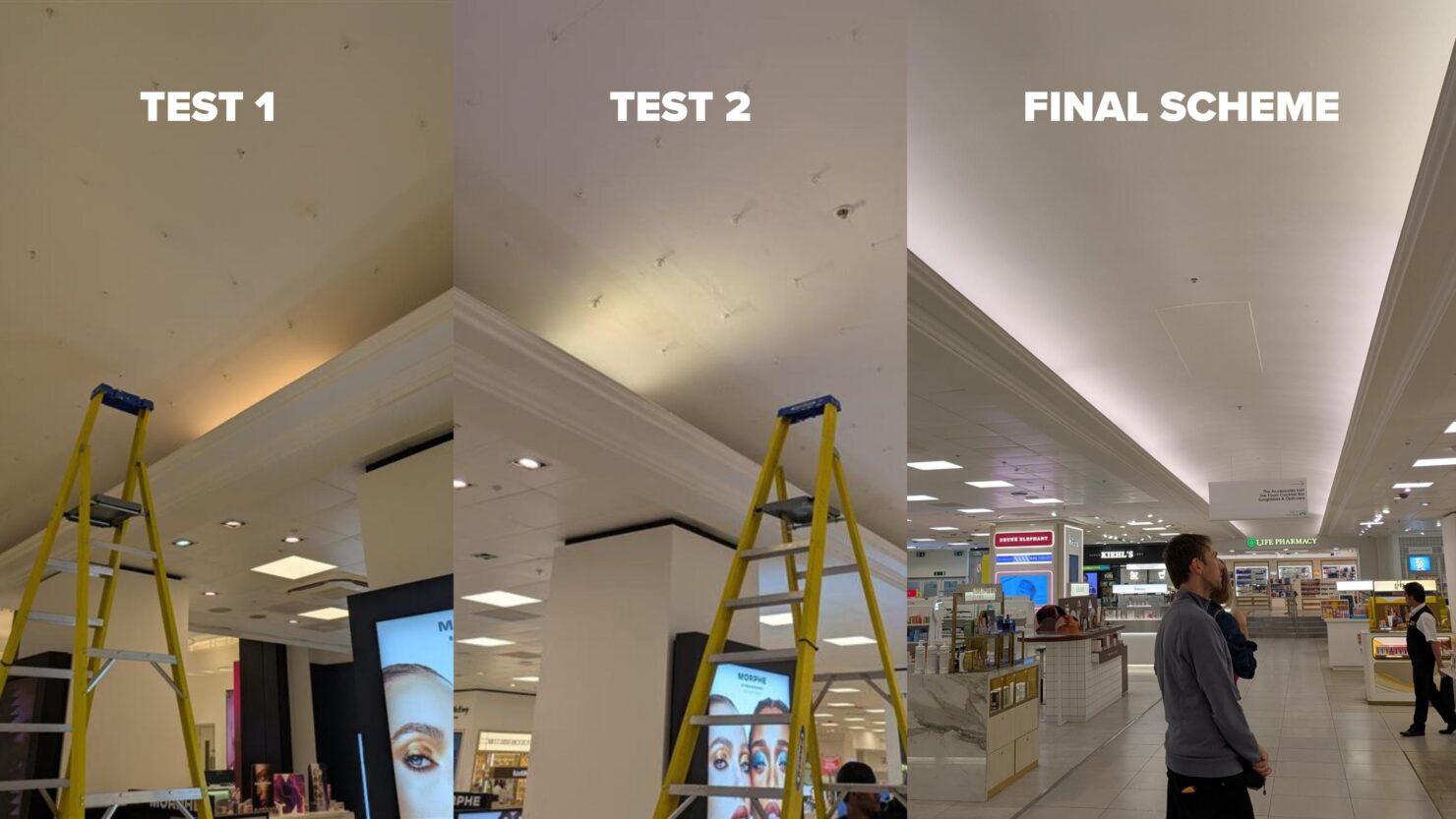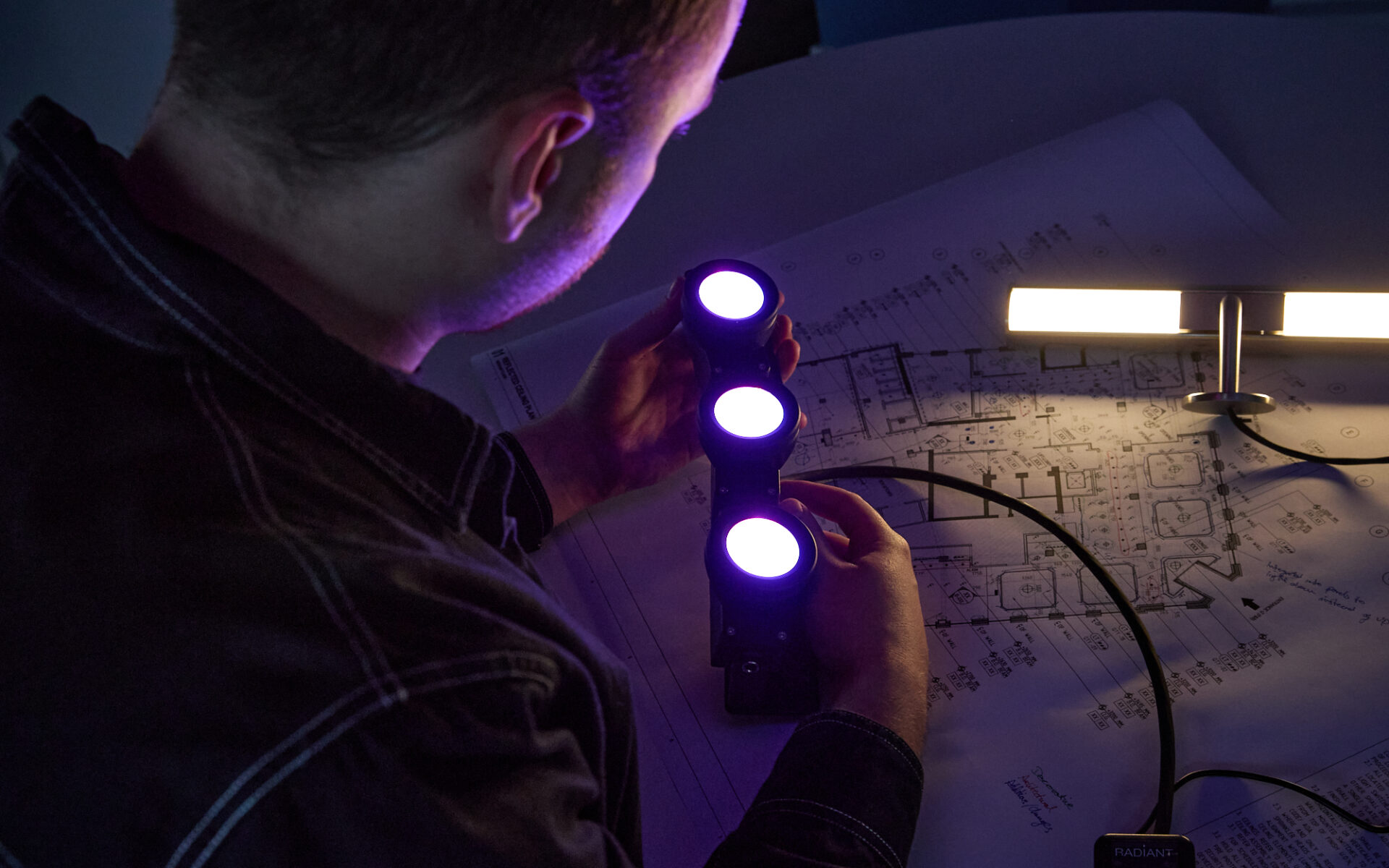The Power of Precision: Why Mock-Ups Matter in Lighting Design
In the world of architectural lighting, precision is everything. A beautifully conceived concept can fall short if the light doesn’t behave as imagined once it meets real materials, surfaces, and spatial conditions. That’s where mock-ups come in, bridging the gap between design intent and real-world performance.

A mock-up allows designers to move beyond theory and simulation. While photometric calculations and rendering software offer valuable insights, they can’t fully capture the subtleties of light in context, from colour rendering and glare to texture, reflection, and contrast. Seeing the light interact with materials firsthand enables the team to make informed decisions about fixture placement, beam angles, and output levels. It also provides the opportunity to refine architectural details so they perform exactly as envisioned.
Beyond technical validation, mock-ups are a powerful communication tool. Lighting is inherently experiential; it shapes how a space feels as much as how it looks. Physical demonstrations help clients understand the design intent in real time, leading to clearer discussions, quicker approvals, and greater trust in the design process.

Perhaps most importantly, mock-ups expose potential issues before they become costly on-site problems. A surface may prove more reflective than expected, a fixture might not deliver the desired effect, or a construction detail may need adjustment. Identifying these factors early reduces rework, avoids delays, and ensures the finished project meets both client expectations and design ambitions.
Ultimately, mock-ups are not just a testing step. They are a vital part of the creative process. By investing time and resources into them, lighting designers can validate performance, refine details, and deliver environments that perform as beautifully as they were imagined.


